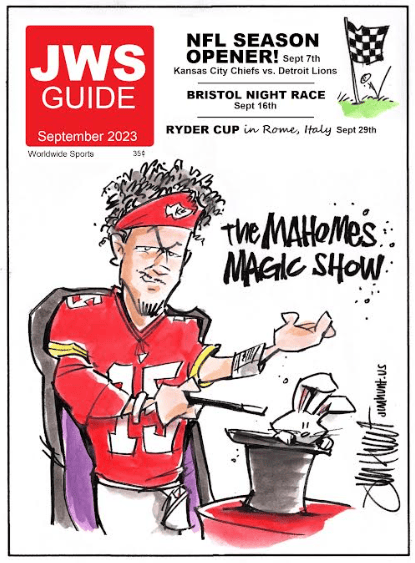- JohnWallStreet
- Posts
- Kraken LPs Part of Rare Sports SPAC to Successfully IPO This Year
Kraken LPs Part of Rare Sports SPAC to Successfully IPO This Year

Kraken LPs Part of Rare Sports SPAC to Successfully IPO This Year

ESH Acquisition Corp., a blank-check company seeking a business combination, recently raised $100 million in an initial public offering.
ESH is led by Jim Francis. He is the founder and former CEO and president of two publicly traded hospitality companies (NYSE: CHSP, HIH). Former Walt Disney Parks and Resorts president Allen Weiss is ESH’s chairman. Christina Francis, the president of Magic Johnson Enterprises, and Seattle Kraken LP Chris Ackerley are on the SPAC’s board. Ackerley’s brother Ted, another Kraken LP, is an advisor to the SPAC.
The group’s decision to leverage a financial instrument that has fallen out of favor with investors to take a private company public may seem curious. There were only 16 successful SPAC IPOs in H1 ’23 after 68 in H1 ’22.
But SPAC IPOs can still be an attractive alternative to cash (demand remains as the IPO investor can always redeem and get their money back), and the Ackerleys do not view ESH in the same vein as many of the failed SPAC sponsor efforts that have come before. Its leadership has a track record of demonstrable success, connections that should yield attractive opportunities, access to capital, and plans to remain involved post-merger.
“We thought we could be counter to what had become so problematic in the SPAC market, which was [sponsors] capitalizing on a financial instrument and playing the arbitrage game with no real intent to identify a company that had real assets [or] a real growth strategy,” Ted Ackerley said.
ESH is now on the hunt for a business combination within the global entertainment, sports, or hospitality sectors.
“Anything tied to the fan experience, [that makes rights ownership] more valuable, is interesting to us,” Chris Ackerley said.
SPONSORED BY VISION INSIGHTS
Playfly Sports has released brand new MLB insights in its new report: Playfly Fan Score: MLB Edition powered by Vision Insights.
For example, did you know Major League Baseball viewing is predominantly local. Local MLB broadcasts make up 82% of all regular season viewing. As the MLB pennant races start heating up, Playfly has uncovered many more insights about MLB Fandom.
According to Forbes: “The Playfly Sports report, working with Vision Insights, is a valuable view into the under told story of Major League Baseball as valuable advertising sports property.”

Playfly Fan Score ranks teams based on 12 proprietary algorithms developed by the internal team of data scientists and the team at Vision Insights. All leading to a fresh perspective to understanding fandom including: Fan Passion, Fan Receptivity, Fan Marketplace.
Playfly Sports Consulting can help you with your team or brand needs.

The SPAC market has imploded over the last 15 months. That is in part the result of the sheer number of SPAC’s that combined with unprofitable companies. Changing market conditions and the SEC’s decision to alter its rules, which made it much harder for a new SPAC to go public, have also been factors.
However, a SPAC can still be a viable source of funding.
“Given our collective track records of success in the public markets in both raising capital and operating successful and valuable companies, we believed an IPO was a better model for us than the time-consuming process of raising private capital,” Jim Francis (CEO, ESH) said. “And the SPAC structure was simply the most efficient manner in which to raise the necessary capital.”
Of course, it can also pay to be contrarian. The upside for a SPAC sponsor can be tremendous if its interest gets vested and the stock begins to trade up.
But for Ted and Chris Ackerley, it was the particular set of individuals associated with this SPAC that spurred their participation.
“We saw the potential of what [this] group could do with [its] operating prowess and history creating value for both companies that had been listed as well as private companies,” Ted Ackerley said.
The Ackerleys sold their media business (The Ackerley Group) to Clear Channel in 2002.
Initially, the group planned to do a $300 million SPAC (think: May' ‘22). Market forces held up the listing.
The reduced number it ultimately went to market with reflects the tempered market that now exists for SPAC investment.
“Net of fees, we can probably put somewhere near $50 million on an operating company’s balance sheet,” Ted Ackerley said. “And we feel with how valuations have come down [over the last 15 months], it gives us a great opportunity.”
Valuations are down from the peak SPAC era. But company cash (or cash out to shareholder) needs are not, and with SPAC investors still having the ability to redeem shares once an acquisition target is identified, ESH’s margin for error may have shrunk.
Of course, that would depend on if the companies it is looking at require cash or if they are profitable entities and simply struggling for a path to go public in the current environment.
In theory, a reduced IPO should have enabled ESH to be more selective with the institutional investors it included in the deal.
“It’s very clear who is out there just trying to play the arbitrage [game] as opposed to who really believes in our board and our ability to find the right assets,” Ted Ackerley said.
That weeding out process, combined with ESH’s one share–one right unit structure creates a slightly different dynamic than many of the previous SPACs that went to market.
“If you stay with us on the back end, post-acquisition of [a] company, you’re going to get 1/10th of a share in the acquired enterprise [for each share held],” Ted Ackerley said. “It demonstrates we’re more committed to the long-term.”
While it is a twist on the more common one share–one warrant structure, investors are only going to stick around if they like the target ESH identifies.
But this group has a hedge against redemptions knowing it can bring more capital to the table if necessary.
The reduced IPO also limits sponsor risk. Remember, sponsors must put up $1 million for due diligence plus at least 2% of the capital raised in underwriting fees. All that money is lost if a merger is not completed.
ESH is now going through the process of finding the right business combination. It hopes potential targets view it as a partner who can help create growth and value.
Timing should work in its favor.
“The growth capital market on the private side is extremely challenging [right now], even for really good companies,” Ted Ackerley said. “And we’ve got capital on the balance sheet now. That makes us attractive.”
The Ackerleys, whose family previously owned the Seattle SuperSonics and Storm, are invested in both the Kraken and the Seattle SeaWolves (Major League Rugby). So, some have speculated ESH raised money for the purpose of buying a sports franchise. That does not appear to be the case.
“The board collectively feels like we want to identify a target co. that has demonstrated real scale to date and with some bank, could scale that much more. So, it is probably going to be a digital asset of some kind; consumer facing. Something that can reach out to millions of consumers very quickly, where there is recurring revenue and it is transactional,” Ted Ackerley said.
The group is currently looking at one digital asset that focuses on one specific pro sports property and helps to drive fandom around its franchises.
“We think building content around the brand, whether it’s a league or team, is a huge part of [the fan experience],” Ted Ackerley said. “Look at the success Ryan Reynolds has had with Wrexham.”
The group is “pretty bullish on the prospects of identifying something in the next couple of quarters,” he added.
If ESH is successful in getting a good deal done it may spur a resurgence in sports SPACs. But that will likely depend on how many companies it looks at before zeroing in on a target.
If ESH discloses that it talked to 50 companies with strong cash-flow, market share, and executive teams, other sports and media executives are going to see there is a healthy pipeline of companies ready to go public and there will be some follow-ons.
However, if ESH looks at just a handful before completing a merger, the industry is likely to remain skeptical.


Top 5 Sports Business Headlines
Click here to subscribe to Sport & Story Daily and never miss a story.
🤝🏼 Disney & Charter make peace ahead of MNF debut
🧸 ESPN, Disney bring NFL to Pixar Universe
🏀 NBA Board of Governors to vote on fining teams for resting stars in nationally televised games
✂ FaZe Clan drops CEO Trink
🤕 Pereira could miss full NFL season on FOX

